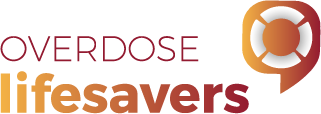
Andrew is revived using his own naloxone kit
Preferred Name: Andrew
Gender: Male
Age: Early 40s
Who is Andrew?
Andrew lives in an outer south-east Melbourne suburb. He describes his ethnic background as ‘Australian’: like both his parents, Andrew was born in Australia. Andrew’s primary source of income is a Commonwealth Newstart Allowance*. Andrew is homeless and has overdosed a number of times. Andrew carries take-home naloxone in his bag ‘24/7’, and has used it several times to revive people. For Andrew, take-home naloxone means ‘mates don’t have to die any more’.
Brief Outline:
Andrew describes an occasion when his friend Thomas revived him using the take-home naloxone kit Andrew always carried in his backpack. Andrew was with Thomas when they decided to take some heroin, as they had done before. They were in the bathroom taking the heroin, when Andrew overdosed. Thomas caught him before he hit the floor, and he yelled out to his mother and girlfriend for help, asking them to bring Andrew’s backpack. He knew how to use the naloxone because Andrew had done overdose response training and had previously explained it to him. Thomas injected Andrew with naloxone and revived him.
They brought my backpack, phoned the ambulance, and got out the pack of naloxone that I carry with me 24/7. Thomas injected me with the two naloxone Minijets [prefilled syringes] from my bag and that brought me back. I came to and was all right. Thomas had never had any naloxone training himself, but because we regularly used heroin together, I’d explained to him how to use it. After that experience, I preach to all my mates to do the overdose response training.
As soon as I heard about naloxone and the overdose response training, I did the program straight away, and since that time, I never leave home without my naloxone kit. The Minijets are easy to use, you just put a tip on them, so it’s quicker than using the glass vials [ampoules] of naloxone, but they’re both the same thing. It doesn’t worry me either way.
Police often stop me on the street and look through my backpack to see if there is any contraband. They ask if I am carrying any sharps, so I tell them straight out, ‘Yes, and I have the naloxone kit’, and they have a quick look.
I know a guy who has saved 12 people with naloxone at different times in his own home, and I’ve used naloxone to help other people twice. I have a bit of confidence now, because I know I can do it and it worked. Sometimes I worry whether I am going to have enough ampoules though.
Reflecting on why he carries naloxone everywhere and ‘preaches’ to his friends who use heroin about getting overdose response training, Andrew said, ‘Well, mates don’t have to die any more. We can do something about it. I’m over losing mates.’
Some time ago I was working with my friend, Thomas, doing mowing and landscaping, and one day we decided to share some heroin. We’d done this before, and we were both using the same amount as usual, but this time I overdosed. Thomas later told me he caught me before I hit the bathroom floor, and screamed out to his girlfriend and his mum, telling them to bring my backpack from the lounge room.
They brought my backpack, phoned the ambulance, and got out the pack of naloxone that I carry with me 24/7. Thomas injected me with the two naloxone Minijets [prefilled syringes] from my bag and that brought me back. I came to and was all right. Thomas had never had any naloxone training himself, but because we regularly used heroin together, I’d explained to him how to use it. After that experience, I preach to all my mates to do the overdose response training.
As soon as I heard about naloxone and the overdose response training, I did the program straight away, and since that time, I never leave home without my naloxone kit. The Minijets are easy to use, you just put a tip on them, so it’s quicker than using the glass vials [ampoules] of naloxone, but they’re both the same thing. It doesn’t worry me either way.
Police often stop me on the street and look through my backpack to see if there is any contraband. They ask if I am carrying any sharps, so I tell them straight out, ‘Yes, and I have the naloxone kit’, and they have a quick look.
I know a guy who has saved 12 people with naloxone at different times in his own home, and I’ve used naloxone to help other people twice. I have a bit of confidence now, because I know I can do it and it worked. Sometimes I worry whether I am going to have enough ampoules though.
Andrew (M, early 40s, Vic, non-prescribed opioids) tells the story of reviving a young woman who had overdosed in a public toilet.
Yeah, a girl I knew, one of the girls in our group, and a couple of other girls, turned up and they went off into the dunny, and one of my friends came running out the dunny screaming at me. She knew I had the Narcan there. Her friend had dropped in the dunny. We pulled her out and put her on the grass in the recovery position and gave her one Minijet at the time. It wasn’t the vials. [We] put a tip on it and put it into the top of her bum muscle, and she came to […] The ambulance was rung as well. One of the girls was on the phone to them, and told them what I’d done and everything, and the ambos turned up and checked her out and made sure her heart was all right and everything [and…] yeah, she didn’t go to the hospital.
Andrew (M, early 40s, Vic, non-prescribed opioids) describes carrying take-home naloxone at all times in case he needs to help someone with it. For Andrew, it’s a tool for saving his friends’ lives.
I push it to all my friends these days. I carry it in my backpack 24/7. Everyone knows I’ve got it, so if I’m near or I’m in [a] group at the time [of an overdose], it’s there […] Mates don’t have to die any more. We can do something about it. I’m over losing my mates.
Andrew (M, early 40s, Vic, non-prescribed opioids) describes explaining to police what take-home naloxone is used for. According to Andrew, he is no longer questioned by police about it.
I get stopped a lot for carrying a backpack. I do a lot of weird hours and the [police] might see me on the streets three or four times on four different sides of town. They pull me over and have a look through my bag to see if there’s any contraband. They ask you if you’re carrying any sharps, so I tell them straight out, ‘Yes, and I have a naloxone kit’ […] A lot of them have pulled me over and I’ve explained to them that it reverses effects of opiates. I’ve got a card saying I’ve been trained in it and I’m allowed to have it and they leave me alone and no hassles after that.

